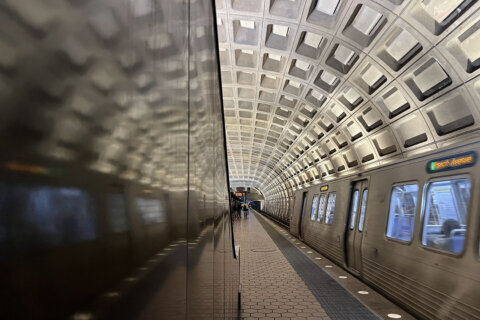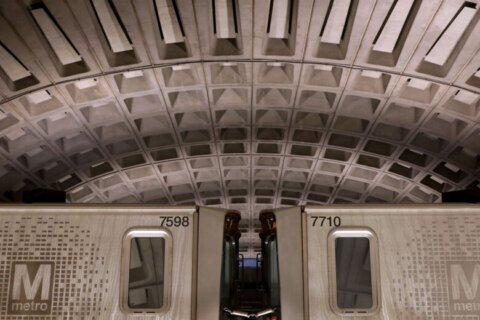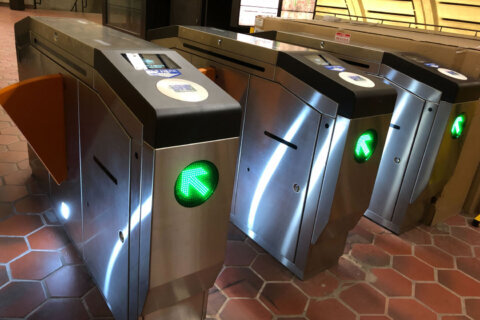WASHINGTON — Just as commuters settle into a routine to deal with Metro’s first rush-hour track work, that first zone will end this week.
The first work zone is scheduled for a total of 13 days — ending June 16 — of single-tracking between East Falls Church and Ballston, to completely rebuild one of the tracks and deal with tunnel issues.
Here are five things to know this week:
1. Stick with what worked last week
Monday through Thursday, the single-tracking will be exactly the same as last week, with the same backup options available as well.
Those choices include shuttle buses between the Falls Church stations and Ballston, where trains are running more frequently, special Fairfax Connector express buses and bike options.
Trains are only scheduled to run on the Silver Line every 18 minutes during rush hour, and trains to and from Vienna are also running only every 18 minutes.
As a reminder, Metro now closes at midnight on weekends for the foreseeable future.
2. Friday brings a very brief break
There is no rush-hour track work planned Friday.
The first single-tracking zone ends in time for the Friday morning commute, but it is only a one-day break from the biggest impact round-the-clock work, as Metro prepares for the next ‘surge’ zone–a major shutdown that will impact far more people in far more significant ways than this first work zone.
3. Start planning ahead
From June 18 through July 3 there will essentially be no Blue Line trains since service will be suspended on the tracks between Rosslyn and Arlington Cemetery and there will be no service on the Orange, Silver or Blue lines between Eastern Market and Minnesota Avenue or Benning Road.
The District Department of Transportation estimates this work zone will impact at least 230,000 Metro trips each weekday due not just to the shutdowns but also because of longer waits for trains, which could lead to significantly more crowding.
The service impacts at the busiest stations downtown will be even more severe than the current single-tracking.
Prince George’s County is outlining some backup options for riders during this second work zone, after no additional options in the first.
4. Shifting helps but flexing too much could land you in more delays
The Metro track work plan goes beyond just the major shutdowns and single-tracking that require the most attention and planning.
Metro has also expanded single-tracking in the middle of the day and on weeknights and continues regular weekend work.
It means riders between about 10 a.m. and 3 p.m. and after 8 p.m. should plan extra time or sometimes consider using a different station nearby to avoid a transfer.
That could affect riders who shift their commutes significantly.
For example, a rider who starts a trip on the Red Line heading to Foggy Bottom might be better off exiting at Farragut North and walking a few blocks than transferring at Metro Center.
5. Remember what worked this week (or what didn’t)
While the track work is moving on to a new stretch after Thursday, the same work zone will return.
Metro plans to come back to work on the other track between Ballston and East Falls Church for 12 days from July 20 to July 31.
The rush-hour work rotates across the system through March 2017.







